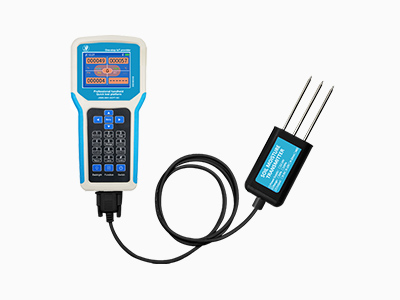Soil Sensors
In iot technology, soil sensors have become a valuable tool for monitoring and managing soil health. By providing real-time data on soil conditions, it helps farmers make informed decisions about irrigation, fertilization and overall crop management. In this article, we will explore the benefits and applications of soil sensors in optimizing agriculture.

The benefits of soil sensors in optimizing agriculture
Monitoring Soil Moisture:

One of the primary uses of soil sensors is to monitor soil moisture levels. Soil moisture plays a crucial role in crop growth, as inadequate or excessive moisture can have detrimental effects on plants. Soil moisture sensors placed at various depths within the soil profile provide accurate readings, allowing farmers to determine the optimal timing and amount of irrigation required. This not only saves water but also prevents overwatering and reduces the risk of diseases caused by excessive moisture.
Nutrient Management:

Soil sensors enable precise monitoring of nutrient levels in the soil. By measuring parameters such as pH, electrical conductivity (EC), and nutrient concentration, these sensors provide valuable insights into soil fertility and nutrient availability. With this information, farmers can tailor their fertilizer application to meet the specific needs of different crops, optimizing yield and minimizing nutrient waste. Additionally, continuous monitoring of nutrient levels allows for timely adjustments and ensures that crops receive adequate nutrition throughout their growth cycle.
Detecting Soil Salinity:

Soil salinity, the accumulation of excessive salt in the soil, can severely impact crop productivity. Soil sensors equipped with salinity probes help farmers identify areas of high salinity, allowing them to take preventive measures and minimize crop damage. By monitoring salinity levels over time, farmers can make informed decisions regarding salt leaching, drainage, and the selection of salt-tolerant crops.
Managing Soil Temperature:

Soil temperature is a critical factor influencing seed germination, root growth, and nutrient uptake by plants. The soil detector has a temperature probe that accurately measures soil temperature at different depths. This information helps farmers determine the optimal planting time, prevent cold or heat stress on crops, and adjust irrigation schedules accordingly. Additionally, monitoring soil temperature can aid in detecting frost risks and implementing appropriate frost protection measures.
Precision Farming:

Soil sensors, when combined with other technologies such as GPS and remote sensing, play a vital role in precision farming practices. By collecting data on soil moisture, temperature, and nutrient levels across a field, farmers can create detailed soil maps. These maps guide site-specific management strategies, allowing for targeted irrigation, fertilization, and pesticide application. The result is improved resource efficiency, reduced environmental impact, and optimized crop yields.
The importance of using soil sensor
Conclusion:
Soil sensors have revolutionized the way agriculture is practiced by empowering farmers with real-time data on soil conditions. From monitoring soil moisture and nutrient levels to detecting salinity and managing soil temperature, these detectors offer precise and actionable information for informed decision-making. By optimizing irrigation, fertilizer application, and crop management strategies, farmers can enhance sustainability, maximize yield, and minimize environmental impact. As technology continues to advance, soil sensor will play an increasingly vital role in optimizing agriculture and ensuring food security for a growing global population.
